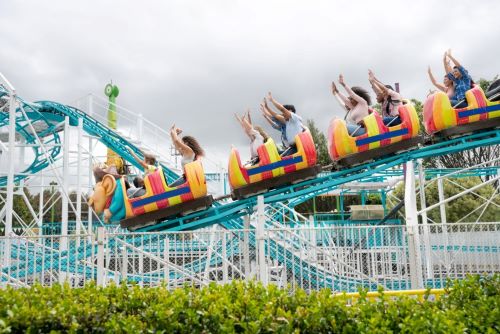Non-powered park equipment forms the foundation of many public spaces. These structures do not use electricity or motors, relying instead on manual activity or gravity. They are durable, cost-effective, and encourage physical play and social interaction.
These components are built to last. Materials such as steel, plastic, and treated wood resist wear and weather. Many systems are modular, allowing for easy part replacement and future upgrades.
Climbing Systems and Obstacle Structures
Climbing features are among the most common non-powered equipment. These include rope nets, walls, monkey bars, and ladders. They help children build strength, balance, and confidence.
Obstacle elements like balance beams, stepping pods, and bridges add variety. When arranged together, they form adventure trails that are fun and challenging.
Slides, Tunnels, and Play Towers
Slides are classic features. Made from plastic or metal, they come in straight, spiral, and wave designs. They are usually attached to platforms or towers.
Play towers often look like castles, ships, or trees. They link slides, tunnels, and stairs, encouraging active and imaginative play.
Sand, Water, and Sensory Play Areas
Sand play areas include scoops, sifters, and dig tools. They let children explore texture and motion. Water zones have hand pumps and channels, teaching basic water flow principles.
Sensory panels use gears, beads, or music to create quiet but engaging activities. These panels don’t need power but offer interactive play for younger children.
Seating, Shade, and Landscape Fixtures
Non-powered areas also include benches, picnic tables, and shade structures. These give families places to rest and watch children play.
Other important items include trash cans, bike racks, and fences. These elements help organize the space and keep it clean and safe.
Fitness Equipment and Stretch Zones
Parks often have outdoor fitness stations. These include push-up bars, leg presses, and sit-up benches. They use body weight instead of motors, offering free access to exercise.
Stretching zones or yoga decks are low-impact areas for all ages. They help warm up muscles and promote flexibility.
Role of Theming in Park Integration
Even without power, park equipment can be themed. Nature, castles, or futuristic styles make the space more attractive.
These designs can support nearby powered rides. For example, a fantasy-themed climbing course might be placed near a dragon wagon ride, creating a smooth theme connection.
Multi-User Installations and Social Interaction
Some non-powered units support group play. Seesaws, carousels (manual), and group swings encourage teamwork and communication.
Many parks now include equipment for children with disabilities. These inclusive designs allow all users to enjoy the space equally.
Safety Standards and Surface Treatments
Safety is key. Parks use rubber or wood surfaces to reduce injury during falls.
Equipment must follow safety rules like ASTM or EN standards. Features include smooth edges, wide spacing, and non-toxic materials.
Integration with Ride Areas
Non-powered zones are often placed near rides. They offer a calm space before or after more active attractions.
For instance, a low-energy play zone may be located next to the wacky worm roller coaster. This helps balance excitement and rest, improving the overall guest experience.
Low-Maintenance, High-Impact Solutions
These systems need little upkeep. No motors mean fewer breakdowns and repairs. Strong materials reduce the risk of vandalism or damage.
They offer high value for parks, schools, and resorts. Long-lasting and low-cost, non-powered equipment is a smart investment in public space.
Non-powered park equipment supports healthy, active, and inclusive play. When combined with powered attractions, it creates a full recreational experience for all ages.

